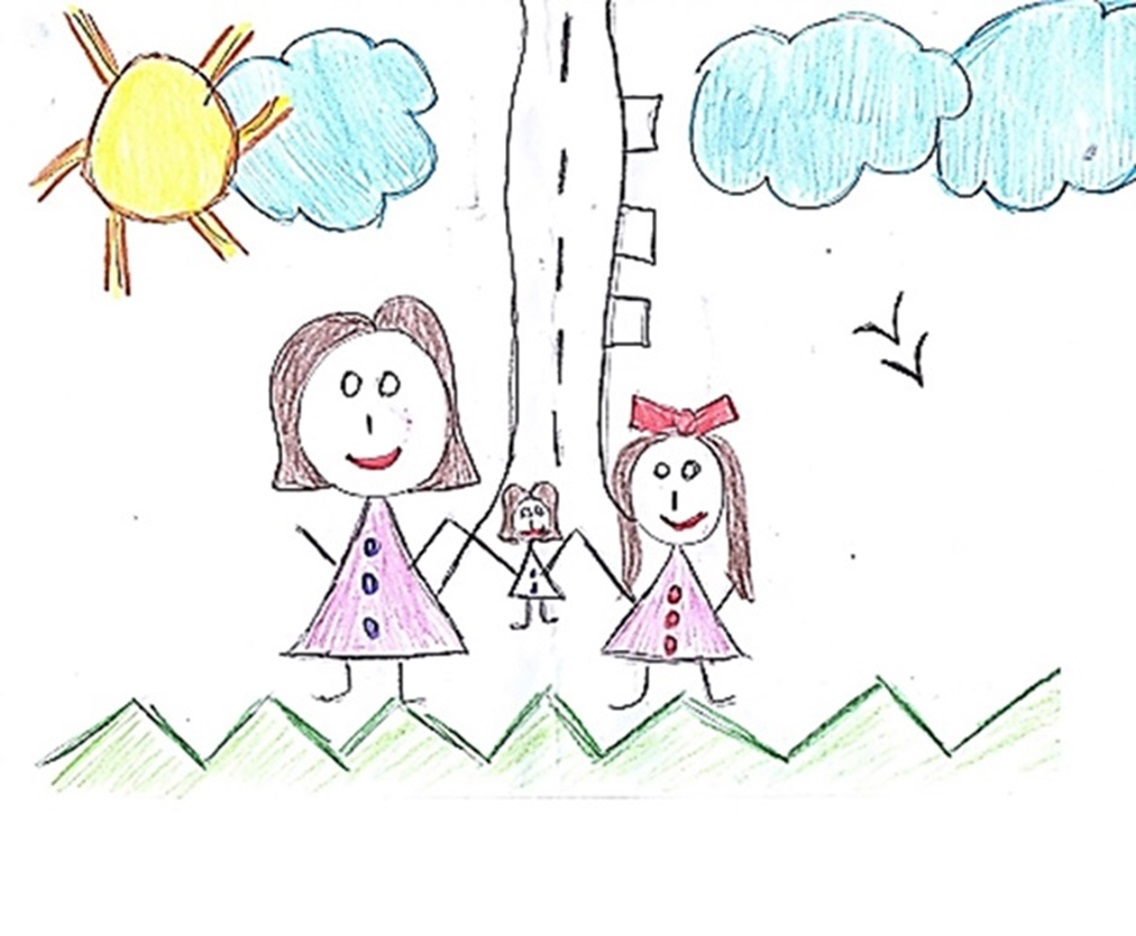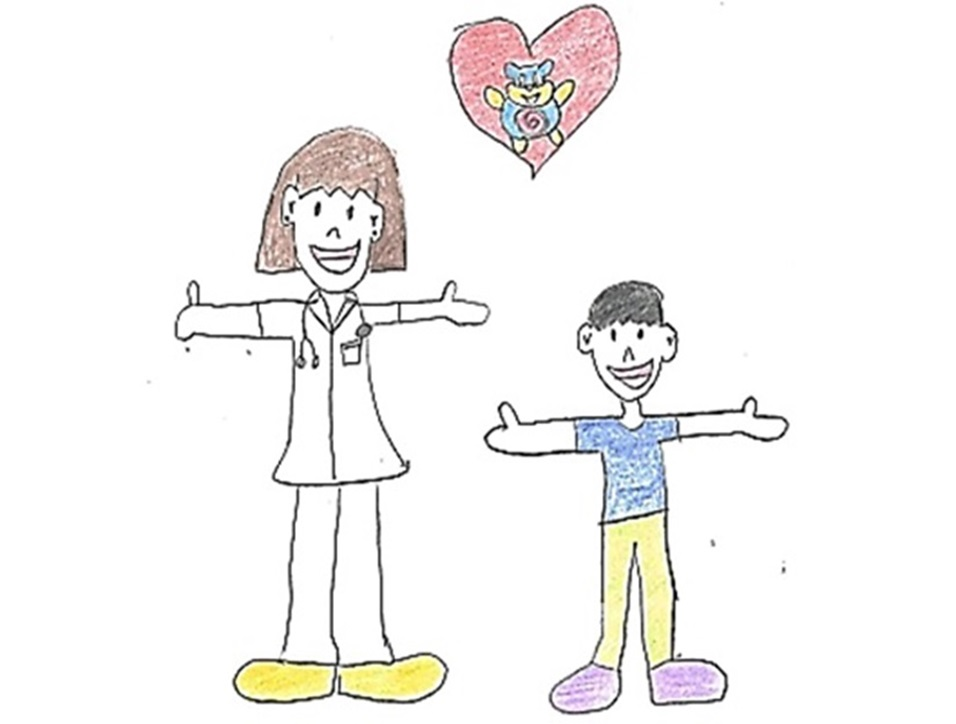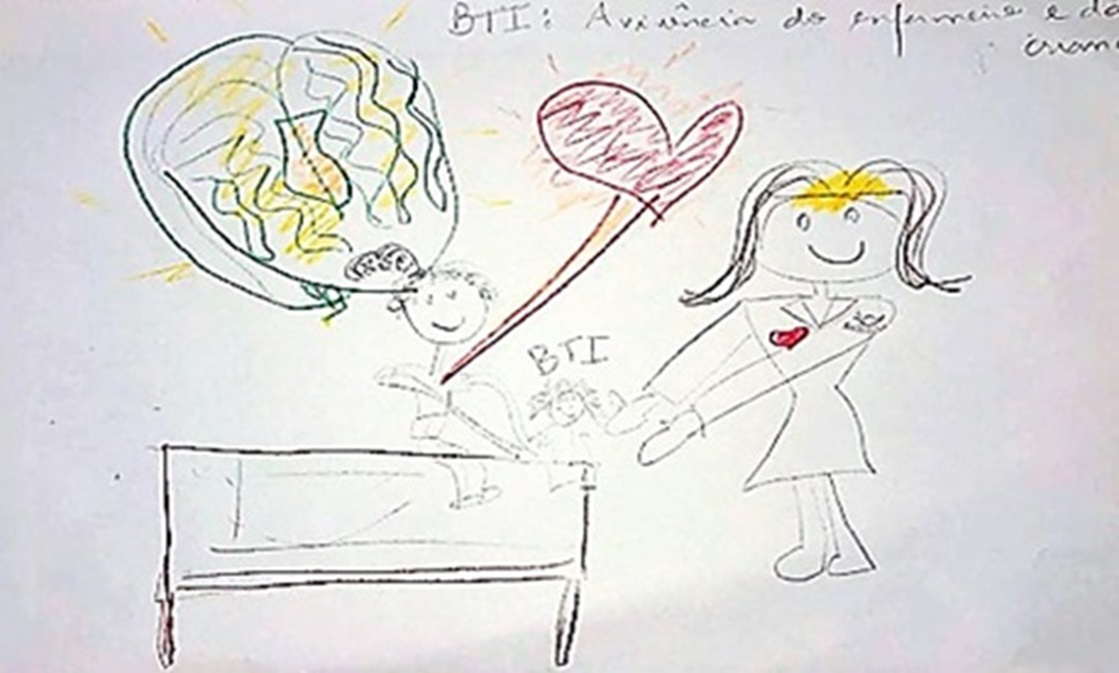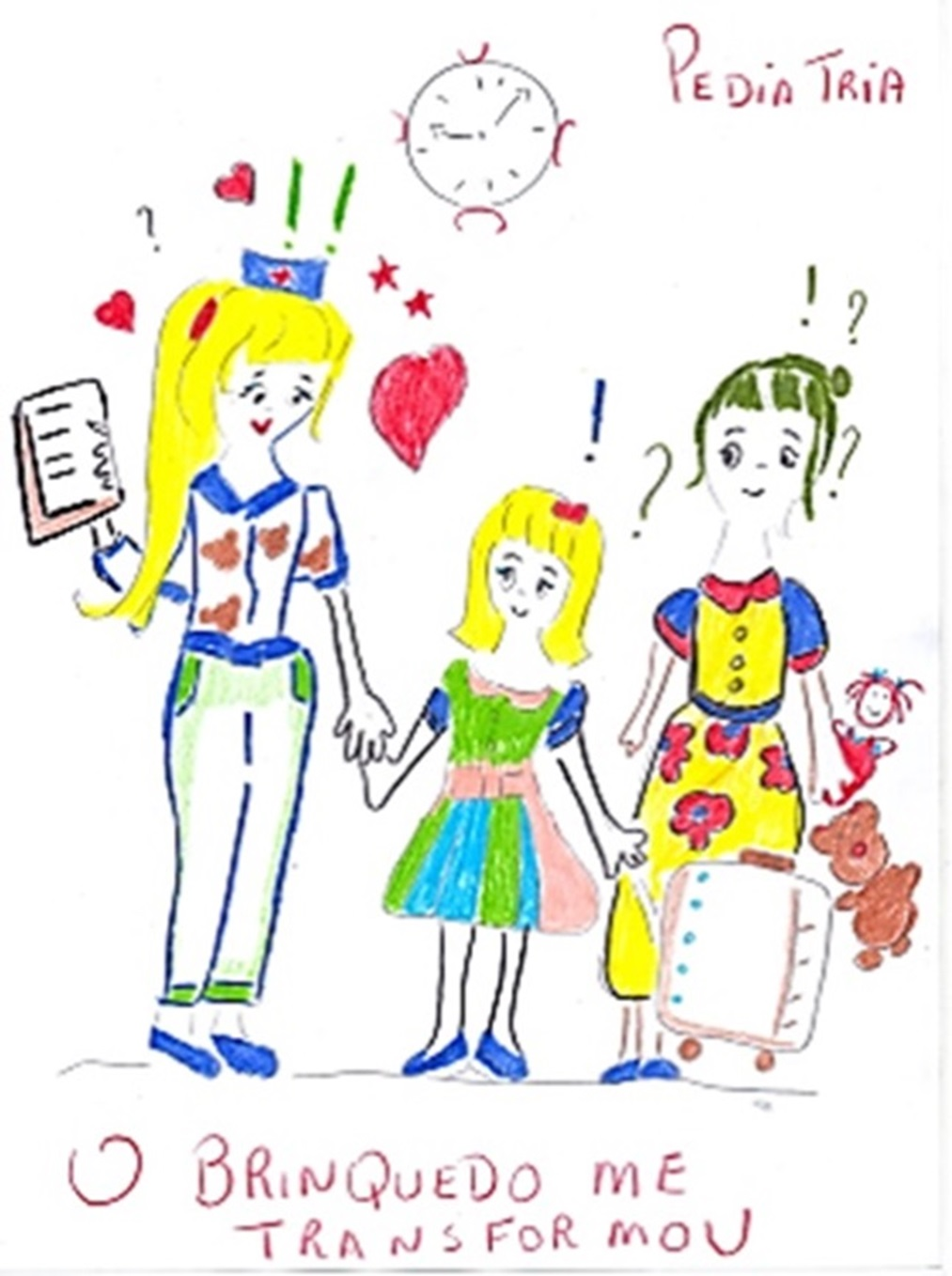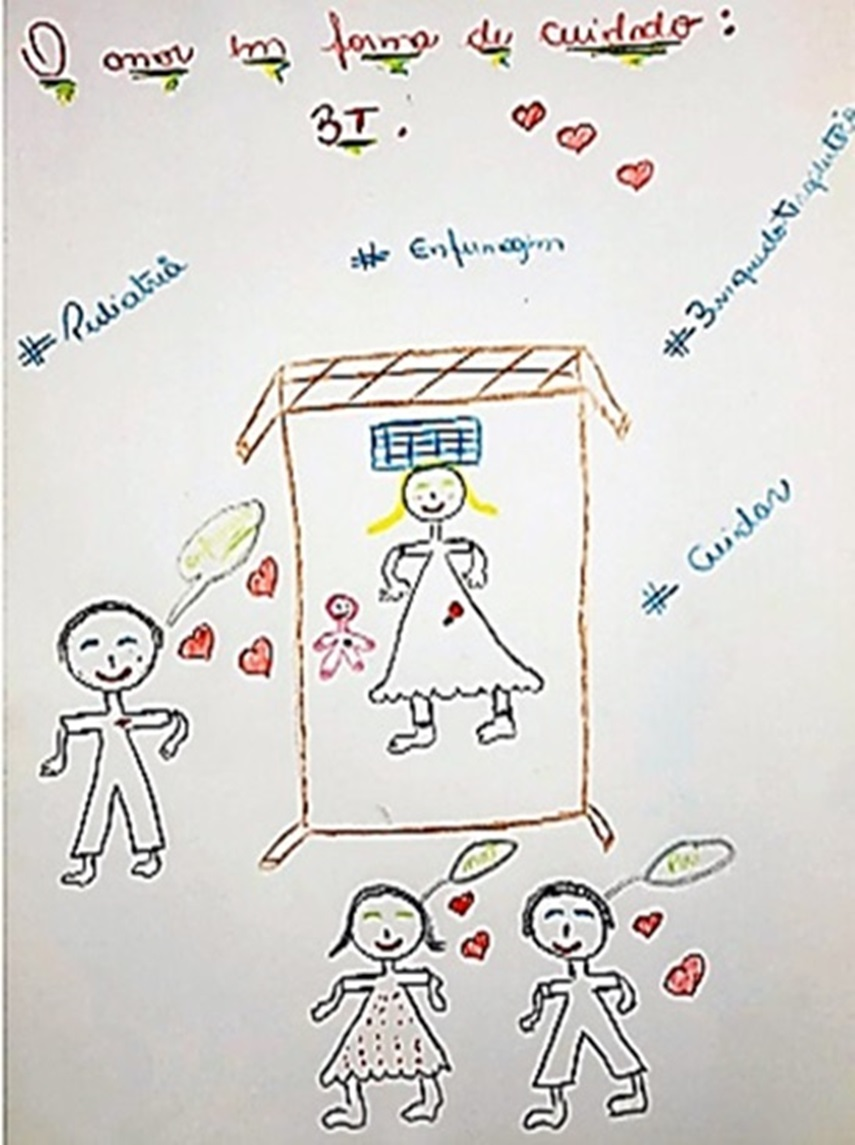1.Introduction
Among the playful interventions recommended for child care in healthcare, the use of Therapeutic Play (TP) stands out (Gjærde, Hybschmann, & Dybdal, et al., 2021; Sousa et al., 2021). Defined as a “Care Technology”, this structured play has been used in nursing care for children (Ribeiro et al., 2023; Melo et al., 2021), supported by scientific evidence that benefits all actors involved. Children, in particular, benefit themselves from this playful approach by helping them express their feelings, doubts, fears, desires and, consequently, offering them greater peace of mind, which enhances their collaboration and learning about what is their responsibility in the field: to care for by one's own health (Souza et al., 2021). This practice is valued by the family for the advancement that adds, strengthens and humanizes health care (Aranha et al., 2020).
Furthermore, evidence of its use demonstrates positive results related to the reduction of pain, anxiety and negative attitudes (Kırkan & Kahraman, 2023; Díaz-Rodríguez et al., 2021). Especially, when TP is used by professionals to prepare children undergoing clinical and/or surgical procedures (Tuncay & Tüfekci, 2023; Oluç & Sarialioğlu, 2023; Zhao et al., 2022; Halemani et al., 2022).
The Brazilian use of this technology is regulated by the Federal Nursing Council, integrating the scope of practice of nurses and teams working in pediatric contexts (COFEN, 2017
However, research indicates barriers to the systematic implementation of this practice by nurses in their daily care for children/adolescents, including: lack of time and play materials; overload of duties, lack of knowledge and inability; lack of institutional support; and, consequently, no systematic inclusion in the team's work process (Ciuffo et al, 2023, Maia et al, 2022).
Seeking to overcome such challenges, research points to new evidence about possible interprofessional integration, creating reference groups in play and TP. This favored the implementation and significant increase of this intervention practice in the units studied (Almeida, Miranda, & Maia, 2022; Miranda, Maia, & Almeida, 2022).
Therefore, listening to nurses about their role in this powerful playful universe and understanding how they represent themselves experiencing the use of TP in the care of children/adolescents, supported by Drawing-Story(D-S), it’s valuable.
2.Method
Qualitative study carried out in the light of Symbolic Interactionism (Charon, 2010) and Grounded Theory (GT), which is structured by the stages of initial and theoretical sampling, data collection and production, supported by memos, which are informal analytical notes, written throughout the research process regarding the data collected, from the construction of codes up to the theoretical categories (Tarozzi, 2011).
The data presented comes from a doctoral matrix research that aimed to understand how the nurse signifies his role in the interaction with the child/adolescent, using TP, and to build a Theoretical Model representative of this experience. (Gimenes, Maia, & Ribeiro, 2023).
The excerpt presented is a look by researchers at the use of D-S as a powerful data collection method, which transcends the verbal expression of the participants and was used to answer the following study question: How does the nurse define their role in the interactional process with the child and the Therapeutic Play?
Eleven nurses of both genders participated, with experience in using/teaching TP, recruited through snowball sampling (Kirchherr & Charles, 2018). Data collection was carried out by a doctoral student in nursing, a psychologist by training, with experience in conducting in-depth qualitative interviews and the D-S Procedure, supervised by senior research professors in the area of Nursing. None of the researchers had close contact with the research participants.
Data were collected through participant observation and semi-structured interviews, recorded and finalized by the D-E, simultaneously, with the analysis followed by the steps: initial coding, categorization, theoretical coding, apprehension of the Central Category, until reaching theoretical saturation, allowing the construction of the Theoretical Model (Tarozzi, 2011). After data collection, simultaneously with each interview, a researcher familiarized himself with the data through exhaustive reading of the transcribed interviews and field notes, beginning the analysis process soon after. Next, the coding and categorization stages were discussed with the research team, being validated by the other two researchers.
The interview began with the guiding question: - Tell me, how do you mean your role when interacting with the child, during the use of TP, ending with D-S, the focus presented in this article. D-S is a playful activity treated as a relaxed means of communication between evaluator and evaluated, with the aim of allowing the participant to express himself graphically and freely (non-directed drawing), guided by his inner inclinations (Trinca, 1987, 1997).
The materials were offered to the nurse: A4 white paper and 12 colored pencils so that he could draw freely, in the time he deemed necessary, which was on average 50-60 minutes and, at the end, he was invited to indicate a title that represented his construction and talked about his design, a report that was recorded to be transcribed and analyzed later.
Also, Trinca (1997) highlights that the proposed “free drawing”, associated with a story and a theme, is characterized as a stimulus for thematic apperception, with the personality exploration instrument created, the D-S, driven by intuition, translated as working hypothesis, with a technique specific to creativity and allowed from children to the elderly, as it is part of the production of all ages [...], the facilitation of expression, but, mainly, as a possibility of representing basic components of the 'psychism' (p.xviii;2), being an excellent means of activating and expressing mental associations.
Regarding the exposed content, we observed that it represents only the “playing nurse” role’s data. This is because the manifest graphic production and the related story express restriction of the total psyche of the participating person. Due to the conditions focused on being professional experiences only, among other action roles that manifest themselves daily, and throughout life.
Therefore, the result obtained arises from the global observation of the references mentioned in the D-Ss, as a sum of the participants' graphic/verbalized representations.
The study was approved by the institution's Research Ethics Committee; it followed all ethical principles that regulate research, involving the participation of human beings; the signing of the Free and Informed Consent Form was obtained; and, the principle of anonymity, using “aliases-verbs/actions” to identify speech.
We emphasize that, at the end, the emerging theoretical model was presented to two participating nurses and to another nurse external to the research, explaining to them the concepts that comprised it, which was validated by them.
3.Results
Below, we present the exhibition of drawings produced by eleven nurses that represent their perspectives on the use of TP, in their daily care for children and their role in the playful universe.
3.1 The Nurse is in a Position to Be Able to Reduce This Suffering for a Very Great Joy
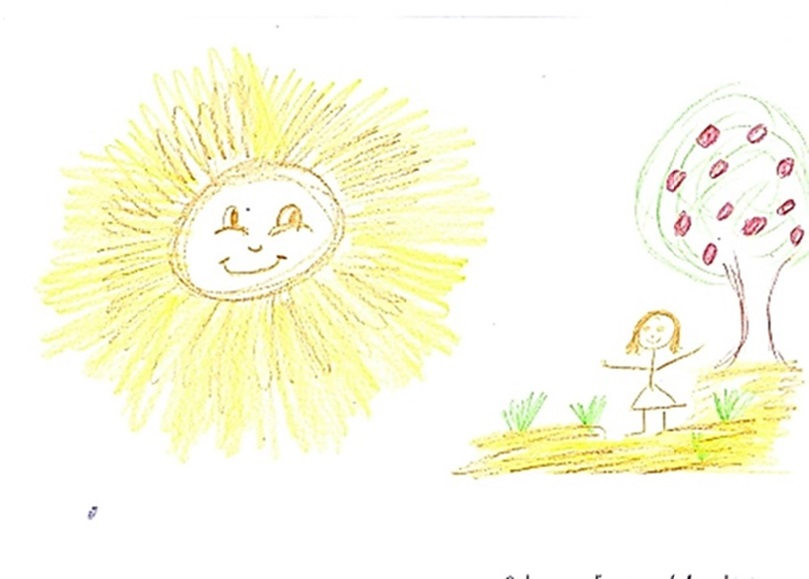
Figure 1 The Nurse Is in a Position to Be Able to Reduce this Suffering for a Very Great Joy (To SEE).
The professional's altruistic capacity in the face of the little patient's suffering is identified based on the graphic representation and the nurse's speech, to the point of transforming the bad feelings that the child experiences into positive ones. The nurse recognizes everything he has and does, as a light illuminating his existence(fig.1).
-They are like rays of sunlight that illuminate my life. [...] The hospital brings a lot of suffering. Q: Where are you? And that sun...? I have an open arm to take all the good things this sun can offer and bring it to these people too! I also put a little plant... green. In a world that isn't pink, but it's almost. A very beautiful tree, full of fruits. [...] All of this is only possible with this beautiful sun! (To SEE)
The participant refers to finding several good things in life and professionally. It is possible to identify them as representing the great force - the light, the facilitator that transforms the state of the sick child.
3.2. The Nurse Provides Strength Through TP to Children and Adolescents to Leave Enclosure and Feel Free and Happy
In this image, the nurse's conviction-declaration is exposed, figuratively, to be responsible for the child, in hibernation in life, whether healthy or sick, coming to birth very happy! (fig.2)
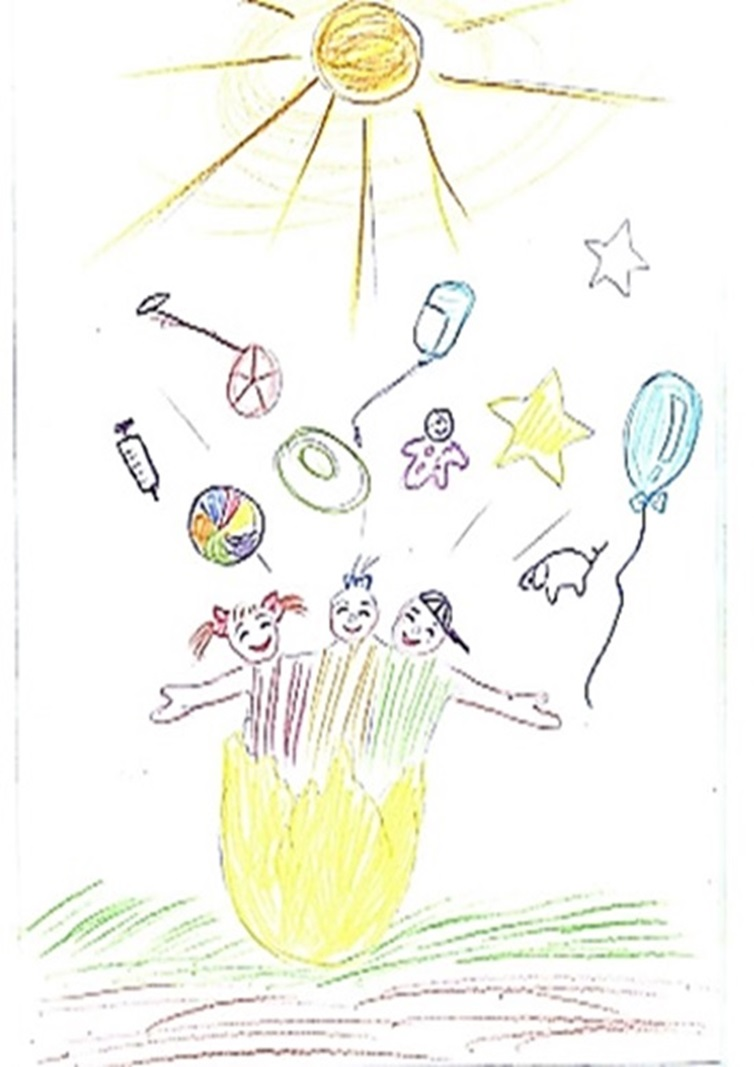
Figure 2 The Nurse Provides Strength Through TP to Children and Adolescents to Leave Enclosure and Feel Free and Happy (To REGISTER).
-Children feel like they are inside an egg, sick or not. And through the toy, it allows them to express themselves. The three children represent the bond. The syringe and serum equipment can stop being traumatic by inserting the play... Doll, star, air bladder, ball, syringe, serum equipment. This sun represents hope, life... However, the nurse who inserts dramatic, instructional or physiological function-enabling therapeutic toys into the systematization of pediatric care is providing children/adolescents with the strength to break out of ‘enclosure’ and feel free and happy. (To REGISTER)
From this perspective, using TP, the nurse revives the child, including the one undergoing the procedures, especially when using hospital materials specific to the care.
3.3. From Unity for TP to Freedom to Play
Through the nurse's narrative, it is understood how the playful material-doll, being the representative and reliable projection of herself, has an intense bond with the pediatric patient, who through contact with the toy, there is the possibility of playfulness happening for the child effectively (fig.3).
-I remembered a photo I have of two children. I don't even know how old the child is in this drawing. Even this child who played with me passed away last week. It was very complicated for us, because we had known her for a long time. She had cystic fibrosis. But why am I telling you this… This drawing reminded me of one of the photos with her. (To BRING TOGETHER)
While the drawing was being made, the nurse extols the beauty represented in the photo, related to the doll holding hands with her and the child.
-After the photos, we went to the sunny area... which is in the hospital, but there was me... the doll and her. The three of us were holding hands [...], it is an area [...] that the children really like and I even put us face to face [...]. And each one held the doll that was in the middle [...]. For me, the meaning was this question of the bond and union that the toy allows. This freedom! Then I remembered this photo, [...] the union of how significant it is for the child and even for us.
Here, the manifestation of the nurse -TP is understood as the possibility of playing, and the doll is the resource that allows the freedom for the playful action to occur, both represented in the formation of this bond.
3.4. Playing Is the Path to TP; Life as It Is: The Toy Reveals Reality; and, The Forbidden Revelation: It Was Not Meant to Be Exposed
Interestingly, three themes corresponding to the stories are revealed, relating to three drawings drawn on the same sheet (fig.4): the last two(below) dependent on the initial one. Among them, the first, broader, “Playing is the path to TP”, it involves the others: “Life as it is: the toy reveals reality(right)”; and, “The forbidden revelation: it was not meant to be exposed(left)”.
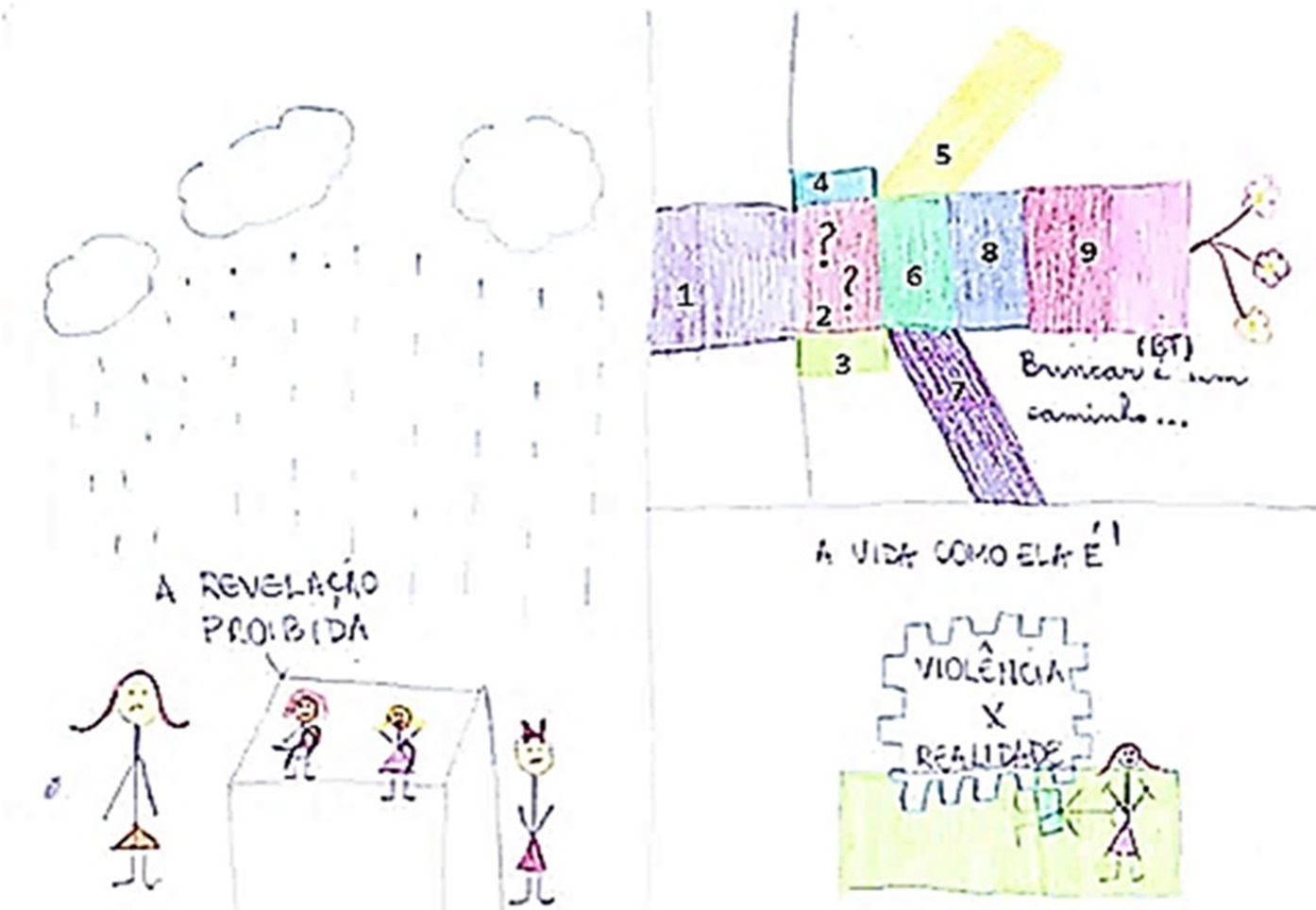
Figure 4 Playing Is the Path to TP; Life as It Is: The Toy Reveals Reality; and, The Forbidden Revelation: It Was not Meant to Be Exposed (To LUMIARY).
In this representation, in the discourse of theme 1, it demonstrates the path the nurse takes to achieve success with TP. The other themes appear as two clinical cases of a child and his family, after the TP session, being natural challenges in the playful process, whose discourse uses categories of unveiled phenomena.
-So, I am following a path [...] that we take when we start playing. Drawing Gray Zone1: First, I don't know anything about the child... I don't know why he is there, [...] who is his family. I just know he is sick. Now, exactly what brought him there (to the hospital), I don't know. (To LUMIARY)
Drawing Burgundy Zone2:
-And then, […]I go through a moment of a lot of questioning, because I still don’t know the family, […]they don’t know me either. […]I will not always […]get the best answers.
Extending Green Zone3:
-[…]in this moment full of doubts, it is necessary to have an area that welcomes the family, so that they do not feel judged.
Drawing Green Zone4:
-Because really, I am there to understand what is happening and help in any way possible.
Perceiving himself in Yellow Zone5:
-When I manage to establish this initial contact, the session begins to take place… And the colors become clearer… about what really happens with the family and the child. Although this is, most of the time, the path shown, it is not always the only path.
Characterizing the Turquoise-Green Zone6:
-Because we can. The child may, in a first TP session, and that already happened to me, […]reveal something forbidden.
Creating the Gray-Purple Zone7:
-[…]another case that the person didn’t want to tell… She didn’t disclose it to her family (secret). […]being something prohibited, which should not be disclosed, talked about. So, she can follow this […]darker path. […]It can have two forms: (7.1.) The family can be together and perceive… Then they may no longer want the child to play; or, (7.2.) It is the moment when the family decides to open up, when whoever is there is not (guilty)... Let's say, it is not the person who would be to blame. […]talking about more social issues, violence, something like that.
Perceiving himself with families, Zones 8,9:
-Multicolored and flowered! Now, when this is not the case, even the little things that happen inside homes… […]; The families see that the child is well, so it's worth him to play, to do this different game. Because, even there (at the hospital), families are so vulnerable, so they need us more, and collaborate. […]they open up more (pink tones). […]if this normally happens, then, in the end, we will arrive at a more flowered, colorful moment… Understanding what is happening with the family and that […]it was a cool game for the child, and therefore for me too.
3.5. Passion for TP
It becomes clear from the graphic representation along with the narration how happy and open the nurse is to playing with her patient, expressing herself similarly to her child/adolescent.
In this image there is a heart at the top, superimposed on the duo, with a toy in the center, a bear, which, whenever possible, is used to apply the procedure needed by the child, while she is “as” a nurse (fig.5).
-The nurse has her arms open. Drawing the stethoscope. Next to him, trying to draw a boy [...] also with open arms... everyone, ready to play... There was the TP! […]it happened in the hospital. I am making a teddy bear with a heart inside. Much love! In the hospital I use a bear more than a doll. That’s it! […]the heart is red and the bear is yellow[...]. Also, about how we managed to bring back his (boy) joy, of living and relating to the team; of not feeling threatened! (To REVEL)
3.6. ITP - The Experience of Nurses and Children
In his representation, the nurse draws a scene from an Instructional TP session, with: a nurse, a girl and a doll in the scenario. Contexts: in the material aspect of the environment, in the affective-cognitive psychological aspect of the pediatric patient and the professional, there are peculiarities identified by the nurse and in the child's attitudes/feelings (fig.6). The nurse presents himself with synergy/empathy for the child, due to his experiences using related/representative terms (heart-mind), both interacting, coloring each other and expanding in the represented session.
-Here, the nurse's heart too, the mind... [...]brain are illuminated [...], when we do the toy session. […]An instructional-TP session, to show the procedure. [...] feelings happen, but also perceptions. [...] the child's mind and heart expand. Completely enlightened, she opens […]her mind to understand, internalize and even put into practice, what she understood about the toy. […] Then, we notice the doubts, the fears and even […] what she creates alone, or through the toy. The nurse with an enlightened mind and heart, because it is through the senses of vision, hearing, that we perceive that she understood and what her fears and desires are”. (To CARE)
3.7. The Toy Transformed Me
The representation demonstrates how incorporating the TP into his daily life was transformative for the nurse. He graphically presents the child and her mother arriving in his sector (fig.7). Next, speaking about the importance of the bond between him and the child in the drawing...
-The nurse is as if he had just received a child who arrived at the unit. He will introduce the first procedures to the child. The nurse's first look was at the child. And this one has the question mark/exclamation: ‘What would that unit be?’ (To SPIN)
The nurse's concern is evident in providing good care to the child and family, because as a professional he has been dealing with the chronic cases that make up the majority of his patients.
-But then, what comes to my mind now... I place here a heart that would be a link, the first contact, between the nurse and the child - proximity! Then, the child comes with some baggage, which is what we generally see. Most are chronic emergencies. [...] and will have a very long time in the hospital. The clock represents the amount of time we have to work […]rushed, but we have to fit everything together. Also, the family - the child's mother... A little scared by everything; a little anxious about the many things that are going to happen. Nowadays, they come and always bring the children's toys.
He highlights that the nurse also has doubts in this first meeting…
- This nurse, he has a question, not as much as the child, who, depending on the pathology, he knows what will happen, but he doesn't know this child yet... So I put a heart […]because I want to receive well this child. […]make her feel good. When she arrives, I consider it to be the main moment, of welcoming. May she feel this energy! In this traditional nurse, I drew a teddy bear, representing the pediatric nurse. Whenever I puncture the child, I draw a teddy bear. And everyone says: -It was nurse 'X' who was joking, who punctured i.t (To SPIN)
As he approaches the end of his drawn story, he adds colors, uniting mind and heart. We observed how the playfulness of TP makes his life more joyful, by denominating his production.
-The nurse has a heart and an exclamation mark […]in green. It represents: ‘I want to take care of this child, but I want to do the best! That, heart and mind’. […]a star too… I want this interaction, […]to be at least different… Not so traumatic. And I can get closer to this child... [...]my smile is like this... the TP has transformed me every time I play, becoming happier.
3.8. Victory of the Therapeutic Play
It synthesizes the nurse's experience with TP, valuing playing at the same level as other procedures in child care (Fig.8). At the end, it portrays a pyramid of values, entitling how he was feeling.
-It is a pyramid as if it were the pyramid of importance. I am putting nursing care at the top, but it is just as important as the other procedures. They are linked to and are priorities for pediatric treatment. I want to present some happy children. (To CARING)
He continues by drawing a statuette, which symbolizes an adult holding a child by the hands, an award received professionally for practicing with TP.
-[…] a drawing that I like […] is from the prize I won (for TP). The DAISY Award. [...]it is like someone holding someone. DAISY is an acronym, short for the illness a person had and created this award for the nurses who took care of him. It has American origins [...]. For me it symbolizes caring. I don't see myself doing anything else! There is also another statuette - a ballerina, new professional recognition. - It is from the last prize I won […]. It represents a patient who ended up dying due to failures in the process. So, [...] importance was given to improving, listening to your patient. (To CARING)
Therefore, the nurse who plays using TP in this hospital has his merit publicly rewarded.
3.9. Love in the Form of Care -TP
When drawing, the nurse presents a girl in bed, with her teddy bear, loving parents, confident in the love that the professional gives to their sick daughter (fig.9),
-This drawing represents the story of a 12-year-old girl, who is hospitalized in bed, having undergone gastric surgery. (Below)...are the parents and that's me. Next to the young woman is her teddy bear, which has had gastrostomy surgery too, so it can feed. I did this to her teddy bear! When doing it, I explained everything to her, in order to encourage her to carry out self-care. (To COLLABORATE)
Clarifying about those responsible for the child, during his intervention:
-They both kept talking, looking at each other, looking at the girl and looking at me. And what I mostly saw, in this whole scene, were looks of lots of love, lots of affection... It was love from the parents toward me, from me toward the patient and from her toward me. I think this drawing represents a lot of what I experienced there, in the hospital, about TP with the child. And a phrase […]from this drawing points to/words: Pediatrics, Nursing, Therapeutic Play, Caring is ‘Love in the Form of Care -TP’. (To COLLABORATE)
3.10. Playing of Caring
The theme presents a situation experienced in a hospital, in which the nurse has worked for a long time. He reports drawing a scene that is common, due to the fact that he deals with different situations of illness among undergraduates and how it happens to him. With the name of Playing of Caring (fig.10), due to the value given to TP, relating playfulness and welcoming, perceived by professional attitudes.
-First I draw the hospital. I put colored floors, [..]the stretcher and the child in my own way[…], sitting and without pain during the TP. On the bed there are TP's objects; which the child handles during the TP. Generally, I place venipuncture material, gloves, gauze, a tourniquet, syringes. We don't put needles. I draw a window and the sun[…] so the child can have a perspective on the world. (To DIFFERENTIATE)
Initially, the nurse presents the child as tense, as this is more frequent and common. During and after TP, there is joy in her. As for him, he participates as a mere observer, acting only when the child relaxes... (To DIFFERENTIATE)
-I could put it like this: the child could be stressed and, as she plays, she relieves the stress and becomes happier. And creating a greater sense of belonging to the space and to the situation itself. In relation to my posture, I believe it would be more of this characteristic of observing.
As the child becomes more involved with the procedure, I become more comfortable interacting with her. [...] happier because it is working. Generally, the mothers stay with us. [...]they become calmer. (To DIFFERENTIATE)
3.11. Playing of Puncture with Little Peter
It reports the emotional situation of the child to undergo the painful procedure, how the mother thinks about the professional and what he responds to the pediatric patient. So, he draws a family arriving at the hospital (fig.11). The nurse is moved by having to draw and report his experiences graphically. He expresses and portrays his joy in helping the child, highlighting the change in behavior of the parents, before and after, regarding the effect of TP on the assistance, as well as the search they make for him, regarding playing in this welcoming.
-I tried to make the drawing… […]I forgot to include the mother[…] Here are the materials for the play. There are the doll, two syringes. […]catheter. [...]My case is just the puncture. [...]The only one who is happy is the nurse. Here he is happy, because he is going to help Little Peter. Little Peter doesn't look very good, no! As soon as Little Peter sees the nurse with the materials, he gets scared. The mother is distant at the time of the play, because she thinks the TP is “silly”. After the TP, their behavior changes. At first the parents think it's silly. Then they changed their perception, they got involved. The children ask me to do the puncture. A mother remembered me! (To LIGHT)
Finally, it is noteworthy that the participating nurses spoke out for D-S, creating a playful professional collective.
4.Discussion
This study made it possible to understand that nurses, when promoting Therapeutic Play to the care of children, perceive them as human beings and themselves, dynamically represented by virtuous adjectives that motivate them to action, such as: helping, preserving, understanding, repairing and welcoming. By doing this, they connect with positive feelings: good humor, joy, hope, perseverance, empathy, love and gratitude with resilience.
The analysis from the nurses' graphic representations based on Trinca's framework (Trinca, 1987), a technique developed by a Brazilian researcher and used in Psychology, has also contributed to the area of Nursing, in a study carried out by Depianti et al. (2018), and for Art Therapy and Psychogenetics (Gimenes et al., 2019). However, other methods of using drawing with children in qualitative research have been presented in Nursing, such as the Draw-Tell-Write (DTW) technique, in which researchers explore experiences and perceptions of children's pain management, in addition to role expectations of the nurse (Angell et al., 2014; Pope et al., 2018; Pope, Tallon & Leslie et al., 2018).
In our study, the invitation to participate in the research was accepted, with no trace of rejection/inhibition when evoking their memories. Therefore, a plot was revealed arising from the figures represented in the graphic production, related to the professional environment of the participants, portraying: contentment, demonstrating openness to challenges, safety and strengthening by the social principles governing their lives, self-control and autonomy in attitudes/decisions, being sensitive to beauty and, without exaggeration, to perfectionism.
As for the memories experienced in the profession by the TP, the result presents a creativity typical of those who played in childhood (Wallon, 1947/1995); and, as an adult, with manifest playfulness directed toward art and culture (Winnicott, 1971/2019), it presents the ability to dramatize in TP, with the sick child, sometimes as a facilitator, sometimes as a partner in therapeutic play.
Through the analysis of the drawings and their speeches we can synthesize: tendencies, desires and impulses expressed in the positive-healthy aspect, in addition to the virtuous use, such as: helping, gratifying, conserving and repairing. As well as: accepting and overcoming challenges; not weakening in the face of rejection or/denial of possibilities to achieve their goal; anticipating actions to find solutions; and, of resisting the mockery/negative stimuli coming from some professional colleagues. Besides positive feelings such as: good mood, joy, hope, perseverance, love and gratitude.
“Continuing with patience and believing in its purpose”, this condition expresses the playing-nurse person, belonging to the level of formal thinking (Piaget, 1945/1978), being the last one that the human being reaches throughout life, in which logic, through reason-intelligence, is reconciled with ethics, in thinking-acting, supported by the driving force of affectivity, because the “person of the other is an affective 'object', to the supreme degree, [... ](and) most interesting cognitive 'object', [...]alive, [...]unforeseen, [...]instructive... (Piaget, 2014, p. 143).
The analysis of the graphic messages/drawings-verbalizations makes it possible to understand that, when the nurse promotes Therapeutic Play in child care, he perceives himself dynamically, represented by virtuous adjectives that drive him to action, such as: helping, conserving, understanding, repairing and welcoming. When acting like this, he motivates himself by connecting to positive feelings: good humor, joy, hope, perseverance, empathy, love and gratitude with resilience.
5.Final Considerations
The graphic representation of the nurse who uses TP in child care reveals itself, from the D-E, as a motivational process, transforming the nurse's person into a playful being, who is driven by the desire to help the child who suffers during the hospitalization to leave confinement and with freedom, bonding, acceptance, aiming to strengthen relationships, which begin to be fed by the feeling of victory, love and compassion.
Therefore, the Drawing-Story technique was powerful and enriched the collection of data, enabling nurses to release their inner inclinations through graphic expression and revealed the essence of the playing nurse-person, constituted by playful affection and humanism.














